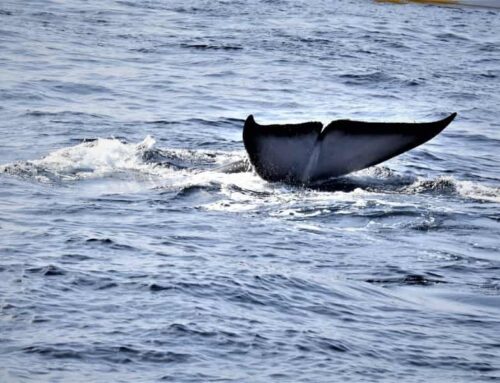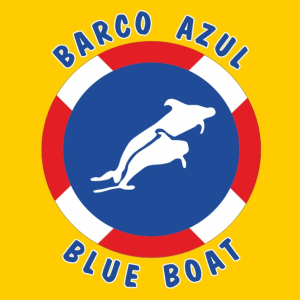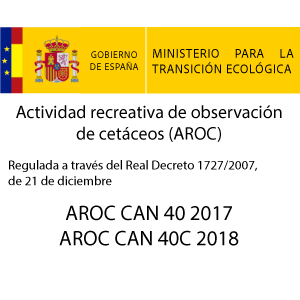A Detailed Guide to Making the Most of Your Whale Watching Adventure
Committed to all quality standards.
The dream of observing whales in their natural environment can evoke unique emotions: seeing them glide through the waters, hearing them breathe as they surface, and sharing, even for a few moments, their majestic presence in the ocean. However, for this experience to be truly unforgettable, meticulous planning that covers every detail is crucial. From preparing with the right clothing to having the correct documentation, and from family organization to onboard catering, every factor influences whether your trip is comfortable, safe, and satisfying.
In this expanded guide, we offer you step-by-step all the recommendations you need. When you’re ready to embark on the open sea, whether in Tenerife or any other destination, you’ll be able to do so with the peace of mind of having considered the most important aspects. This way, your only concern will be to fully enjoy each sighting.
Essential Preparations for Your Whale Watching Adventure
The key to a successful sea outing lies in anticipating the various situations that may arise. A whale watching tour is not just about getting on the boat and setting sail; it’s about controlling all the elements involved: from appropriate clothing to nutrition, as well as document logistics and the safety of all passengers. Below, we will delve into each point so you can approach your adventure with complete confidence.
Travel Checklist for Your Sighting Trip
To avoid last-minute surprises, it’s helpful to prepare a detailed list of everything you need. This way, you won’t forget any essential items and you’ll be sure to have everything that will help you enjoy yourself to the fullest.
- Excursion Booking
- Choose Reputable Operators: Research online reviews, both on tourism platforms and social media. An operator with a good reputation will prioritize the well-being of the cetaceans and the customer’s experience.
- Cancellation Policy: Before finalizing your booking, check what happens if the weather is bad or if unforeseen circumstances arise. Some providers offer date changes, partial refunds, or flexible solutions that will give you greater peace of mind.
- Departure Times: Many companies have several sailing slots. Evaluate which one best suits your itinerary and goals. Some recommend early morning for a higher probability of sightings, while in the afternoon the sea might be choppier or more crowded.
- Basic Equipment
- Waterproof Bag: At sea, water splashes and humidity are constant. Carrying your phone, camera, and documents in a waterproof container will prevent unpleasant surprises.
- Binoculars: If you’re excited by the idea of scanning the horizon for fins or blows, marine binoculars are essential. They usually feature a non-slip design and quick focus so you don’t miss any detail.
- Camera: For whale photos, a model with good zoom is advisable. Don’t forget to bring several memory cards, extra batteries, and, if possible, a waterproof strap or system to prevent the camera from falling into the sea.
- Personal Protection
- Sunscreen SPF 30 or higher: The sun, reflected on the sea surface, can be more intense and cause sunburn more easily. Apply sunscreen in advance and reapply every two hours, especially if it’s very breezy.
- Sunglasses with UV protection: It’s essential that they block ultraviolet rays to protect your eyes. A wrap-around design can prevent side glare.
- Hat or Cap: Prefer models with adjustable fastening, to prevent them from flying off in the wind. A retention strap can be very useful.
- Health and Emergencies
- Small First-Aid Kit: Include bandages, gauze, antiseptics, and basic medications like painkillers or antihistamines. In case of chronic conditions (asthma, allergies, high blood pressure), carry your medication and a copy of your medical prescription, in case of an emergency.
- Anti-Seasickness Medication: Seasickness can occur even in people who don’t usually experience it on land. Consult your doctor about the most recommended options, whether patches, pills, or natural solutions like ginger.
- Enough Water: Embark with plenty of liquids to stay hydrated. Sometimes, onboard offerings may be limited or come with additional costs.
- Cash and Card
- Small Expenses: From an extra snack to souvenirs at the pier, having some cash can be very helpful.
- Tips and Extras: Many guides partly depend on tips, and some places don’t accept cards. Make sure to carry low-denomination bills and coins.
Additional Preparations
- Weather Check: Oceanic weather can change quickly. Check not only the precipitation forecast but also the wind intensity and sea state.
- Power Adapter: If you’re traveling from abroad, checking the type of plug and voltage will save you headaches when charging cameras or electronic devices.
How to Dress for a Sea Tour
Conditions at sea are usually different from those on the coast. A sunny day can suddenly turn into one with a strong breeze and low temperature. Therefore, layered clothing is your best ally to maintain comfort at all times.
- Clothing Layers
- Breathable Inner Layer: A technical t-shirt made of materials that wick moisture away from your skin, allowing you to stay dry even if you sweat or if a stronger breeze comes up.
- Light Sweatshirt or Jacket: These will provide an intermediate layer of warmth for when the temperature drops a bit or the wind picks up. Opt for flexible fabrics that don’t restrict your movement when walking on deck.
- Waterproof or Windbreaker: Even if the sky is clear, you’ll be in a marine environment where water splashes and the breeze is constant. A sturdy and lightweight windbreaker can make the difference between enjoying the trip or getting cold and damp.
- Appropriate Footwear
- Non-slip Sole: Decks are usually wet from dew, rain, or waves. Choose footwear that offers good grip to reduce the risk of falls.
- Sporty Style: Closed-toe sneakers or boat shoes are excellent options. Avoid heels or open-toed footwear, as they are unstable and offer little protection against bumps or slips.
- Accessories and Complements
- Gloves and Hat: In colder seasons or areas with strong currents, protecting your extremities helps retain body heat.
- Small Towel or Microfiber Cloth: Very useful for drying hands, wiping sweat, or removing any splashes from your camera.
- Handbag: You can carry a small, zippered bag to store personal items you want to keep handy, such as your camera, lip balm, or phone.
Recommendations by Season
- Summer: Even in warm weather, don’t rule out a light jacket or scarf for your neck. The sea wind is quite refreshing, especially as you move away from the coast.
- Winter: Add thermal layers and, if appropriate, waterproof trousers. Damp cold can chill you to the bone if you don’t have adequate protection.
Required Documentation and Tickets
The administrative and legal aspect is often overlooked in the excitement of travel, but it’s as essential as any other detail, especially if you’re traveling with minors or in international contexts.
- Personal Identification
- ID Card or Passport: Verify that it’s not expired or nearing expiration. If you’re extending your trip to another nearby country, check if you need specific visas or permits.
- Backup Copies: Scan your documents and send copies to your email or save them to the cloud. In case of loss or theft, this will facilitate their replacement and avoid complications with authorities.
- Tickets or Confirmed Booking
- Printed Version: Carrying a paper backup protects you from potential battery failure or lack of internet connection on your phone.
- Digital Version: Having the PDF handy will allow for quick access and the ability to show the booking to the crew in case of any doubt.
- Certificates and Special Permits
- Signed Consents: If your plan includes activities like snorkeling, diving, or interaction with wildlife, a liability waiver is often required.
- Authorization for Minors: If any child is traveling without both parents or legal guardians, the laws of some destinations require a notarized permit.
- Insurance Policy
- Travel Insurance: Covers medical emergencies, lost luggage, or last-minute cancellations. Find out about limits and exclusions to avoid surprises.
- Water Sports Coverage: If you’re going diving or engaging in risky activities, verify that your policy doesn’t exclude them.
Advantages of Having Up-to-Date Documentation
- Faster Boarding: Presenting all your papers in order makes check-in procedures smoother.
- Peace of Mind: Knowing you are legally and administratively covered will allow you to enjoy the experience without worrying about bureaucratic setbacks.
Best Practices for Hydration and Nutrition
The marine environment can be more exhausting than expected, as the body must adapt to the movement of the vessel and the sun reflecting on the water. Maintaining good nutrition and hydration before and during the trip is key to feeling well at all times.
- Before Boarding
- Light Breakfast: Avoid fried or heavily seasoned foods. The ideal is to opt for fruits, cereals, and yogurt, which will provide energy without heaviness.
- Prudent Time: Allow 30 to 60 minutes between eating and boarding the boat, to avoid gastrointestinal discomfort in case of seasickness.
- During the Journey
- Carry Enough Water: Although some vessels offer drinks, it’s best to be prepared. You can drink water, natural juices, or isotonic drinks to replenish mineral salts.
- Avoid Alcohol: In addition to hindering stability, it increases dehydration and can worsen seasickness.
- Healthy Snacks: Energy bars, nuts, whole-grain crackers, or fresh fruit are easy to carry and will help you maintain vitality on long journeys.
- Recommended Foods
- Complex Carbohydrates: Whole-grain bread, oatmeal, or cereals; they provide long-lasting energy.
- Light Proteins: Canned tuna, fresh cheese, or turkey breast can be good options if you plan a prolonged trip.
- Post-Boarding Care
- Rehydration: After a few hours at sea, your body may have lost more fluids than you imagine. Replenish with water, juice, or isotonic drinks.
- Nutritious Meal: Opt for dishes rich in vegetables, proteins, and quality carbohydrates to replenish energy. Avoid going on an excursion on an empty stomach, as the sensation of seasickness can intensify.
Prevention of Stomach Discomfort
- Stress Control: Anxiety can contribute to discomfort, so try to breathe deeply and find pleasant distractions if you feel nauseous.
- Gradual Movements: When walking on the boat, do so gently so your body can adapt to the rocking and you don’t worsen seasickness.
Travel Tips for Families and Large Groups
Traveling with children, seniors, or large groups requires more careful logistics. However, with proper planning, everyone can enjoy the adventure without complications.
- Group Coordination
- Meeting Point and Times: Clearly establish where and when everyone should meet, to avoid delays or confusion. If necessary, create a messaging group to keep everyone informed.
- Defined Roles: Assign one person responsible for the itinerary, another for luggage, and so on. Distributing tasks simplifies the process and eases the individual burden.
- Entertainment for Children
- Educational Activities: If the boat offers talks on marine wildlife, encourage children to participate and ask questions. This will pique their curiosity and keep them engaged.
- Toys and Devices: Bring items that can entertain them without causing clutter or excessive noise. A drawing pad, headphones for a tablet, or small crafts can be great allies.
- Safety for Children and Seniors
- Appropriate Life Jackets: Ask the operator to provide life jackets adjusted to the age and build of the most vulnerable group members.
- Rest Area: Some boats have covered spaces or wider seats. Secure a comfortable spot for those who might get seasick or tire easily.
- Flexibility and Patience
- Adaptation Time: A larger number of people can lead to unforeseen events: someone forgot their documents, a child got seasick on the way, etc. Anticipate by adding an extra time margin for contingencies.
- Possibility of Changes: If the operator allows it, consider the option of changing dates or rescheduling the departure if inconveniences arise. This can be vital if one of the group members falls ill at the last minute.
Advantages of Group Travel
- Shared Cost: Sometimes, a private tour can be relatively cheaper if divided among all participants. Furthermore, it allows greater freedom to adjust schedules and routes.
- Shared Experience: Sharing the excitement of seeing a whale emerge from the water with friends or family creates shared memories that are hard to match.
Conclusion
Whale watching is an experience that combines admiration, emotion, and a deep respect for the marine environment. For your excursion to be truly unforgettable, it is essential to organize carefully: check each item on the checklist, wear appropriate clothing, have the required documentation, and take precautions regarding food and hydration. Similarly, if you are traveling with family or a large group, coordination will be your best ally to avoid inconveniences.
At the end of the day, all these preparations converge on a single objective: that you can enjoy the majesty of cetaceans without distractions or discomfort. With the peace of mind of having anticipated every detail, you will be ready to marvel at whales and dolphins in their natural habitat, adding another chapter of wonderful experiences to your travel story. Embark on this adventure with confidence and take home unforgettable memories!










